.The joys of walking Jerusalem
We felt that we had shortchanged the capital of Israel during our previous visit, which had consisted of only two days in Jerusalem itself, barely enough to tour the main sights of the old city (Western Wall, Kotel wall tunnels, Davidson Center, Via Dolorosa and the Church of the Holy Sepulcher), the large and moving Yad Vashem Holocaust Memorial complex, the world famous Israel Museum and the Dead Sea Scrolls at the Shrine of the Book , the incredibly beautiful Marc Chagall windows in the synagogue of the Hadassah Medical Center in Ein Kerem, and the lively Mahane Yehuda food market in the new city. Jerusalem, the largest city in Israel with more than 3,000 years of history, has so much to offer the visiting tourist, and we wanted to discover more of its many attractions. So we checked into the uniquely luxurious King David Hotel, without doubt one of the best hotels in the world, and divided our week in Jerusalem between walking the streets of the city and touring a few more of its key attractions (the Mount Herzl Museum and national cemetery, the Knesset and it’s incredibly beautiful Chagall tapestries, the Supreme Court, the City of David, etc…).
The Old City of Jerusalem
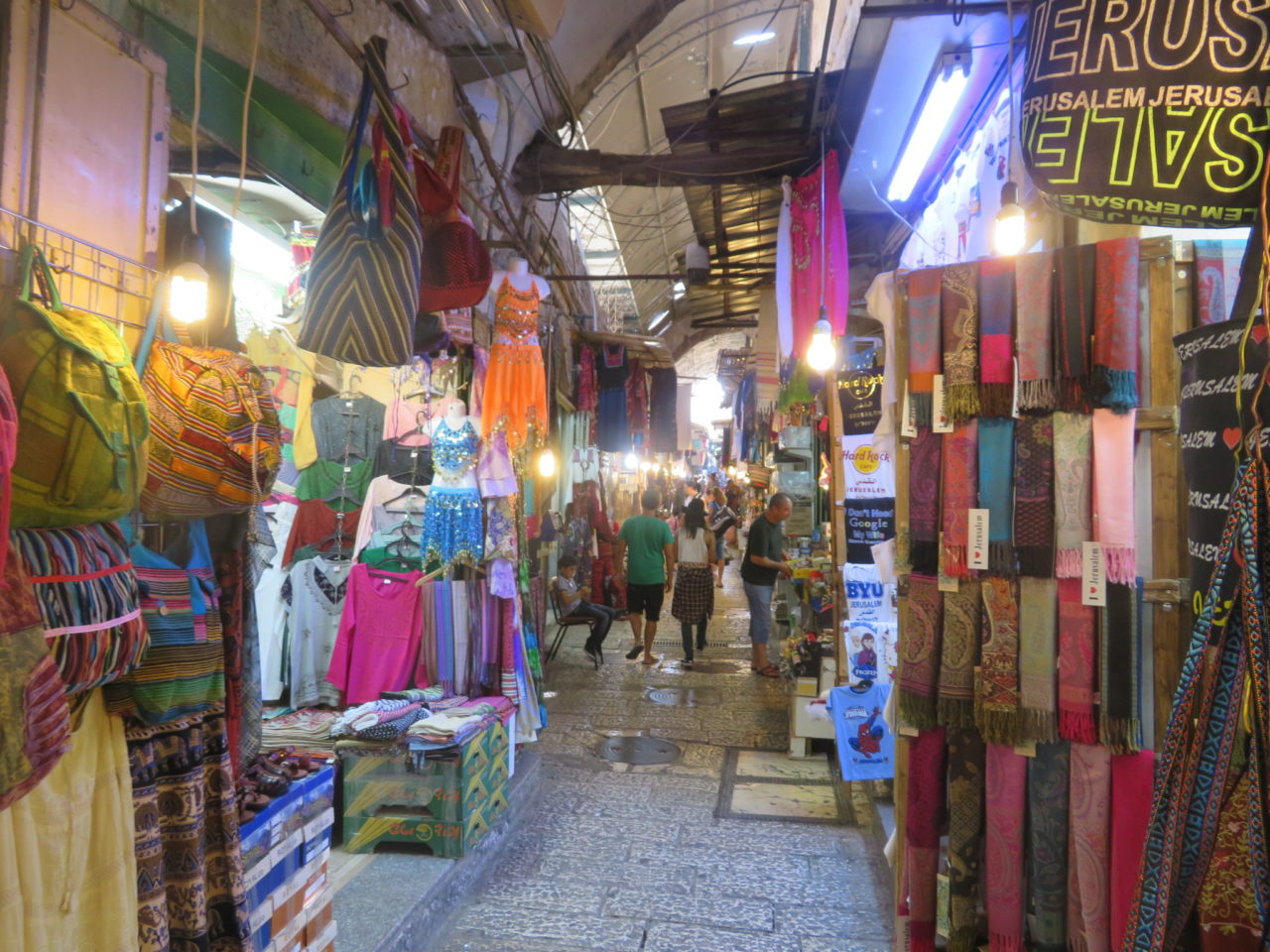
The joys of walking Jerusalem – Walking the Old City of Jerusalem
Exploring the Old City was first on our agenda. We had already visited the main sites so we wanted to see everything else. Neatly divided into four quarters (Muslim, Jewish, Armenian, Christian), the one square kilometer of walled-in old Jerusalem is filled with very walkable small alleys and squares. Entering the old city via Jaffa Gate leads directly into David Street, a downward sloping alley which separates the Christian quarter from the Armenian quarter and which is full of souvenir shops. The Armenian quarter, the smallest of the four quarters, hides most of its treasures behind closed gates and high walls, so we found little to see. The Christian quarter, on the other hand, houses not only the Church of the Holy Sepulcher but also the Church of the Redeemer (with a good lookout view over the old city from the top of the church), and some charming little cafes scattered among the many souvenir shops of the area.
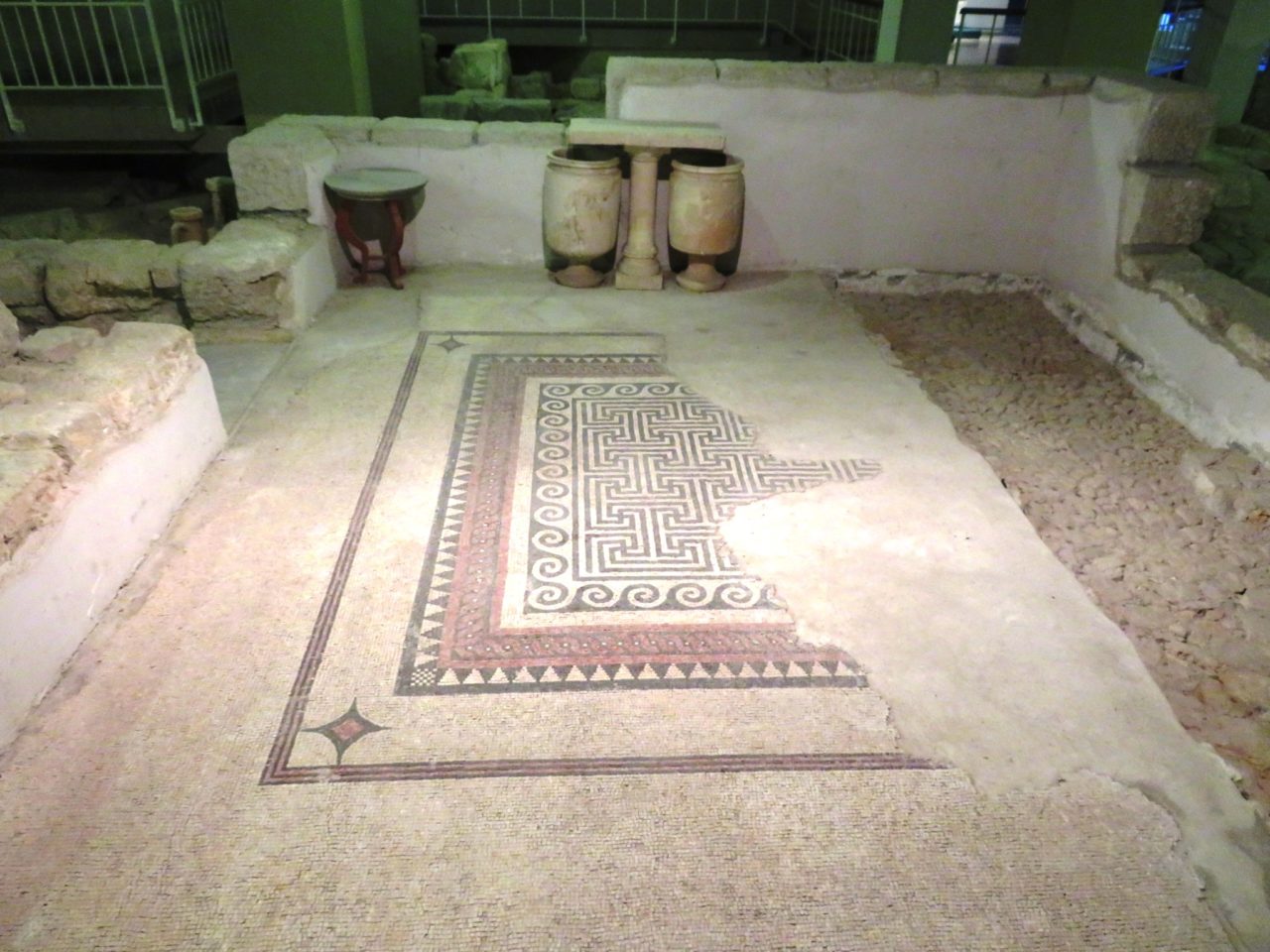
The joys of walking Jerusalem – a Herodian Mansion floor from 2,000 years ago
The Jewish quarter of the old city was by far the most interesting quarter to visit. Completely destroyed by the Arabs during the Jordanian occupation of the city between 1948 and 1967, the Jewish quarter has been largely re-constructed since Jerusalem was liberated in 1967. And since the historic Old City does not allow new construction without first excavating the site for archeological treasures, much has been found and is now on display for visitors. The Herodian Mansions and the Burnt House are two of the most important and fascinating archeological finds to visit in the Jewish Quarter. The entrance fee to the Herodian Mansions includes an audio guide which we found to be comprehensive and helpful.
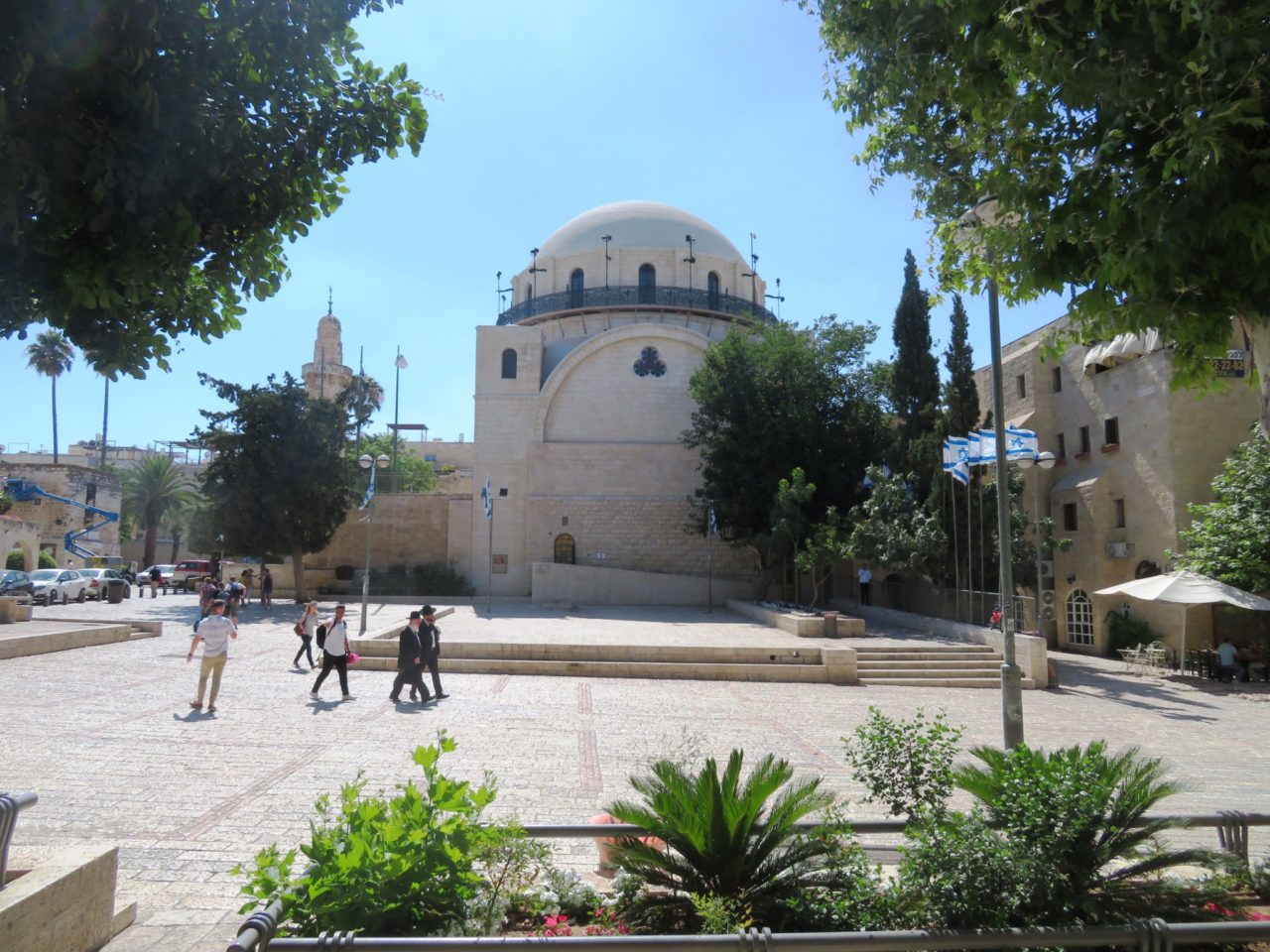
The joys of walking Jerusalem – The Hurva Synagogue in the main square of the Jewish Quarter of the Old City
The re-constructed Cardo street and market, the re-constructed and very active Hurva Synagogue (also with a great lookout view of the old city from its top) in the quarter’s main square, the Batei Mahse square and the Rothschild House were also interesting sights.
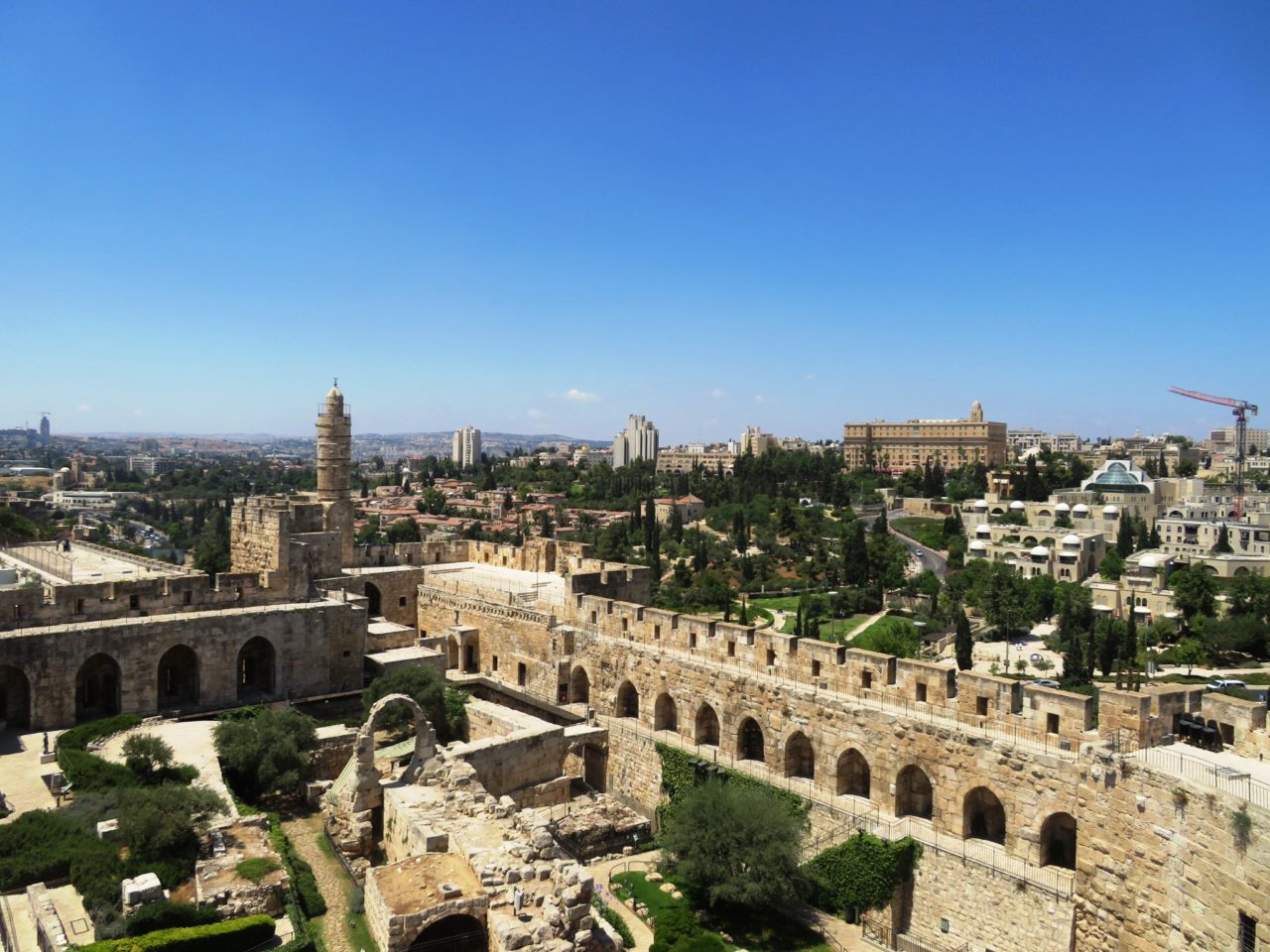
The joys of walking Jerusalem – The Tower of David with the King David Hotel in the background
Our best discovery in the old city, however, was the Tower of David, located right at the Jaffa Gate entrance to the old city. We were so impressed by the Tower of David that we concluded that it should be every visitor’s first stop in the old city of Jerusalem, for three reasons. First, the Tower of David houses a very extensive, comprehensive and modern museum of the history of Jerusalem which will take you through the 3,000 years of history of the city and will greatly improve your understanding of everything else that you will be visit, from the Western Wall to the Church of the Holy Sepulchre. We encourage everyone to take the guided tour of the museum before venturing further into old Jerusalem.
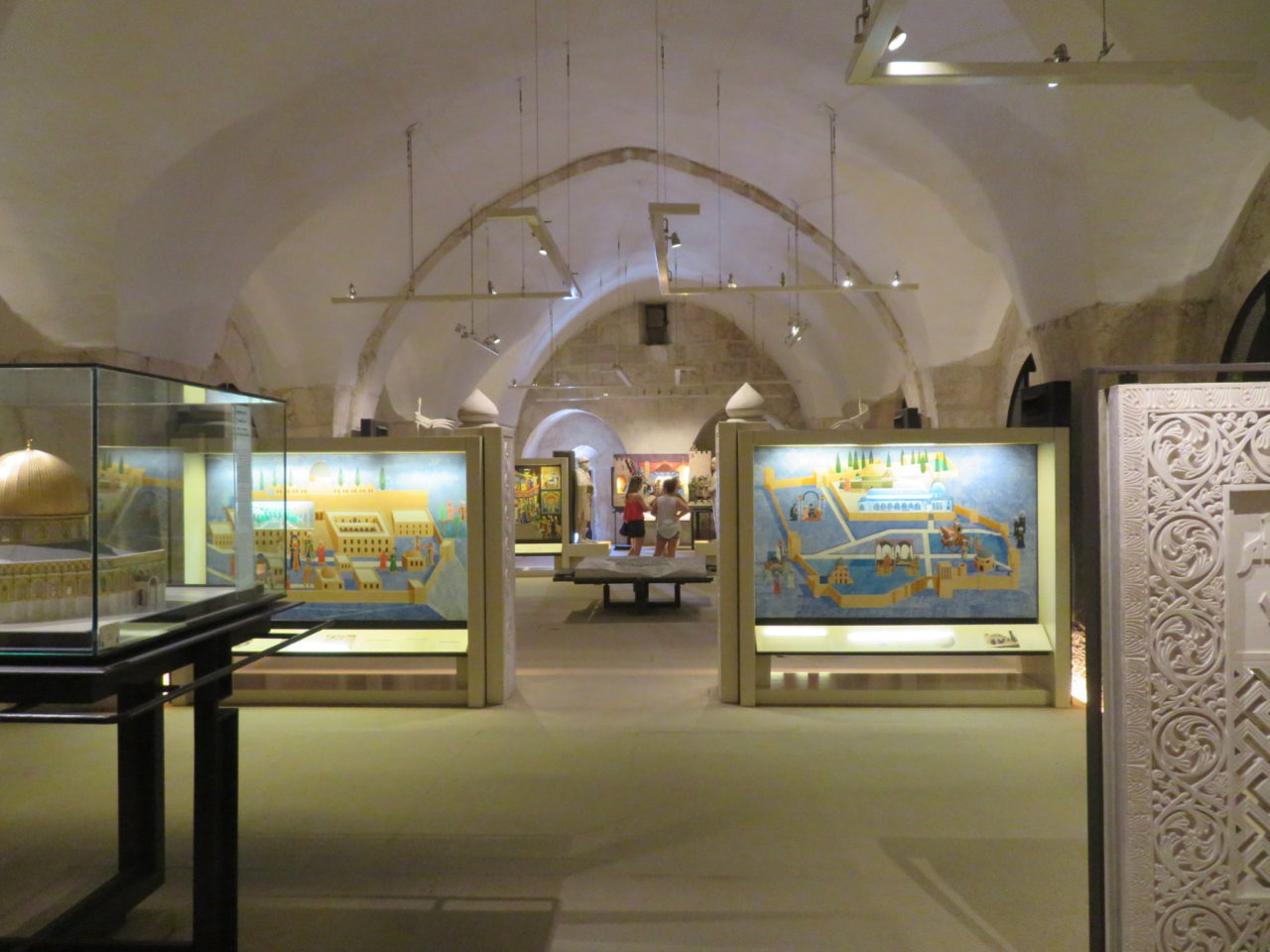
The joys of walking Jerusalem – Museum of the history of Jerusalem at the Tower of David
Secondly, the Tower of David is located at the highest point in the old city, which is why it was the main fortress protecting the city for much of its existence. Today, it means that the panoramic view of the old city from the top of the Phasael Tower (one of the three towers of the Tower of David fortress) is arguably the best in town! Taking some photos from the large terrace at the top of the tower and getting an idea of the layout of the old city from viewing the respective location of its main landmarks will again facilitate your understanding of Jerusalem.
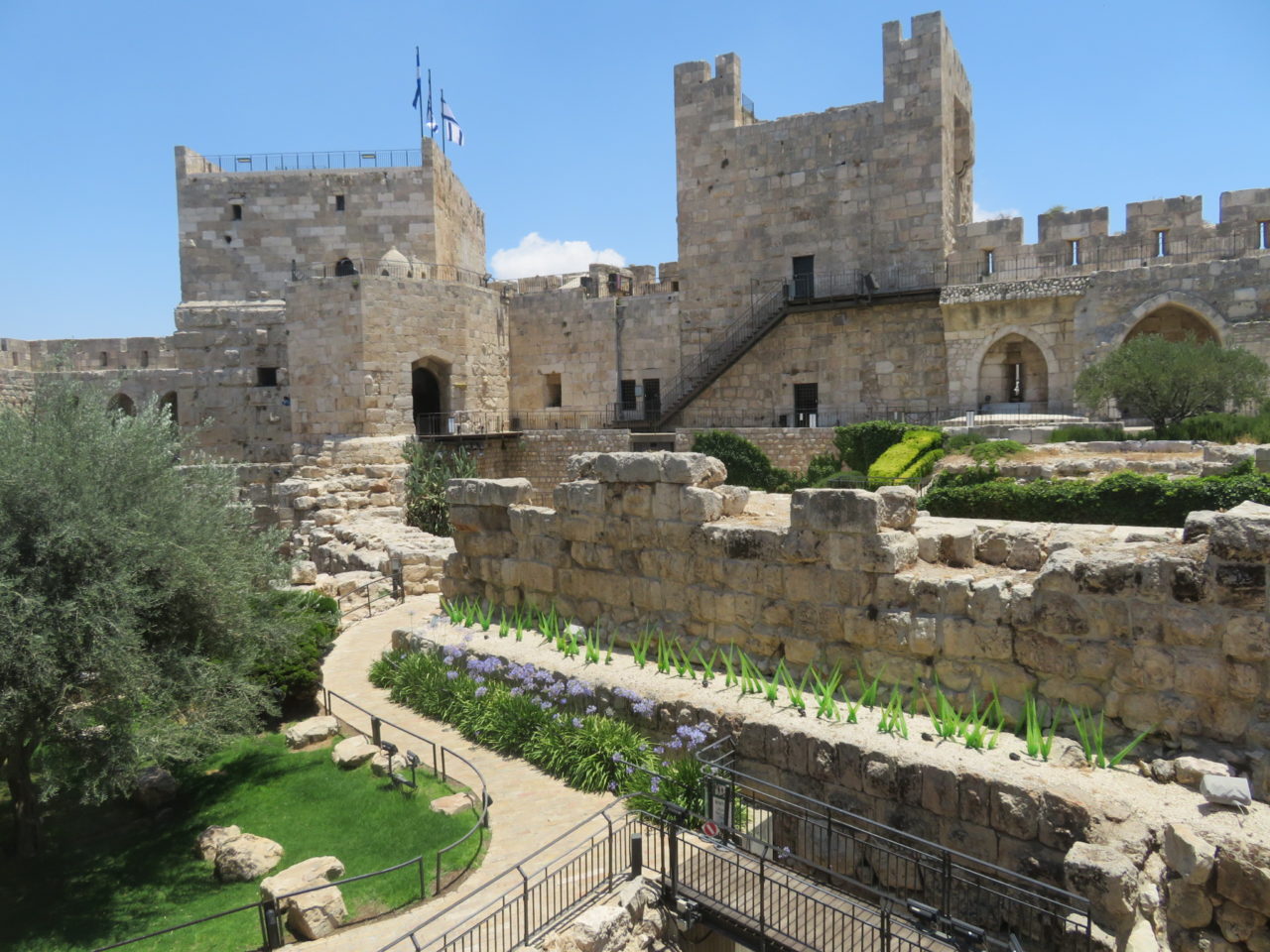
The joys of walking Jerusalem – Fortifications from different time periods (Ottoman, Crusader, …) at the Tower of David
And thirdly, the Tower of David itself is an archeological treasure covering much of the history of the old city, since each easily distinguishable layer of its walls and rooms date from a different period of its history, from Herod to the crusaders and from the Ottomans to the Malaturks.
The new city of Jerusalem
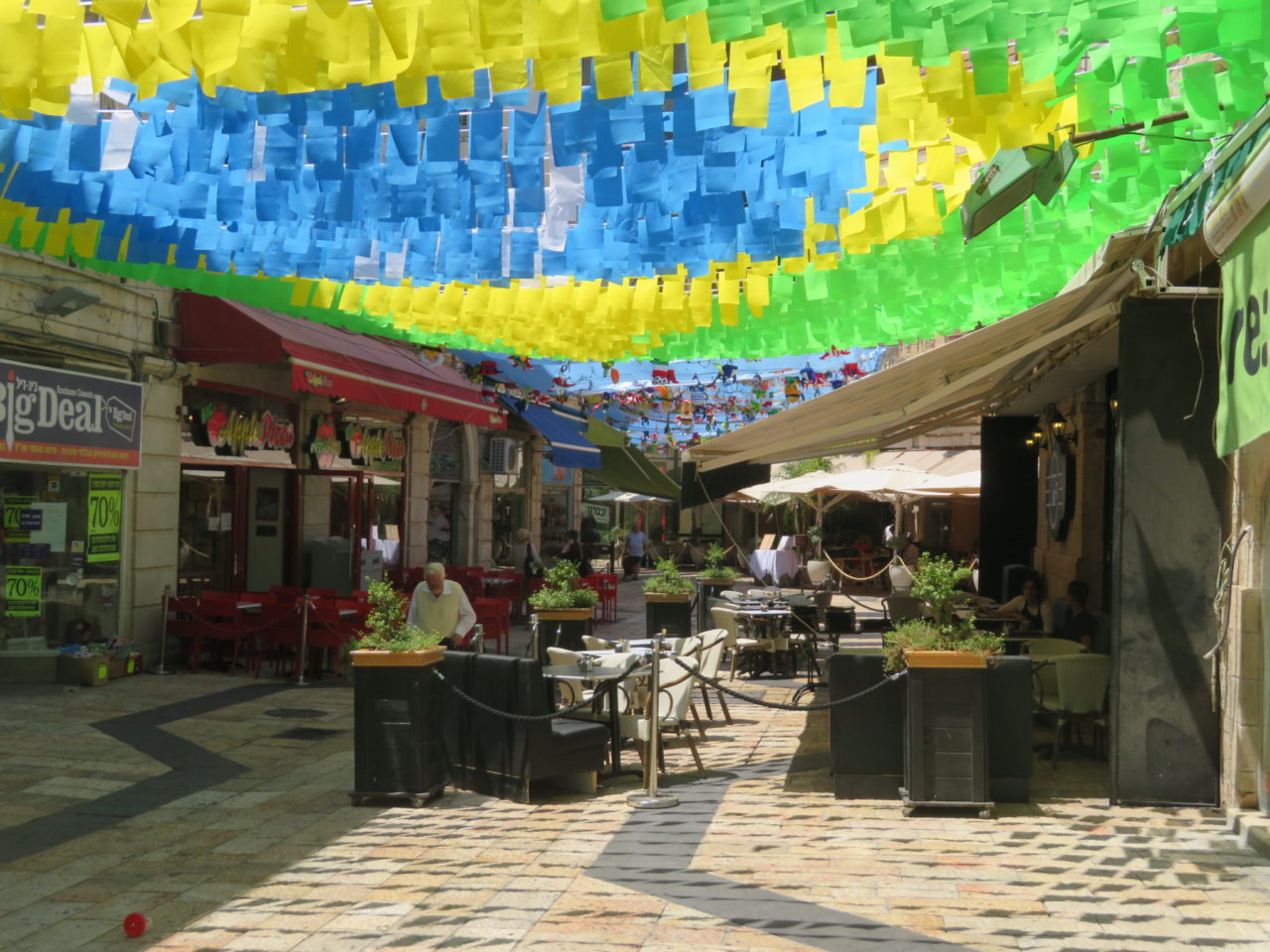
The joys of walking Jerusalem – a side street in downtown Jerusalem
We were particularly interested in the residential areas just west of the Old City, which were the first neighborhoods built outside the walls from about 1855 onward and which today constitute the center of Jerusalem, known as the “new city”.
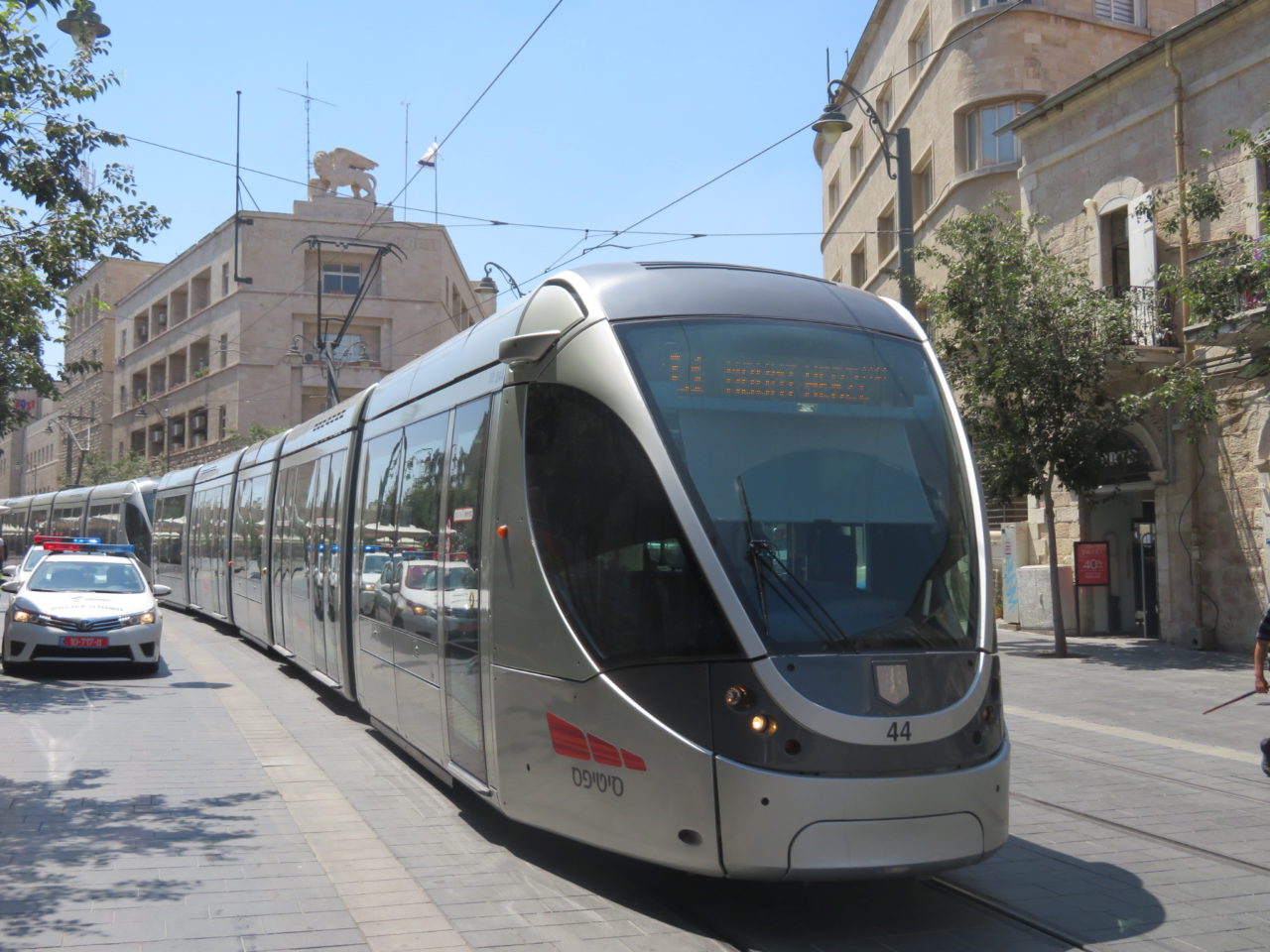
The joys of walking Jerusalem – Jerusalem has a modern network of trams, buses, taxis
We wanted to explore the new city by foot, even though Jerusalem is served by a large and modern network of trams, buses and taxis (we particularly like the GETT taxi app which provides Uber-style taxi service not only in Jerusalem but all over Israel). While getting to the Yad Vashem Memorial or the Israel Museum from your hotel is a taxi ride, exploring the residential neighborhoods of the new city is better done by foot as all of the center city neighborhoods are probably not much bigger in size than the Old City and they are situated close to the main hotel area where the King David, Inbal, Mamilla, Dan Panorama, David Citadel and several other hotels are located.
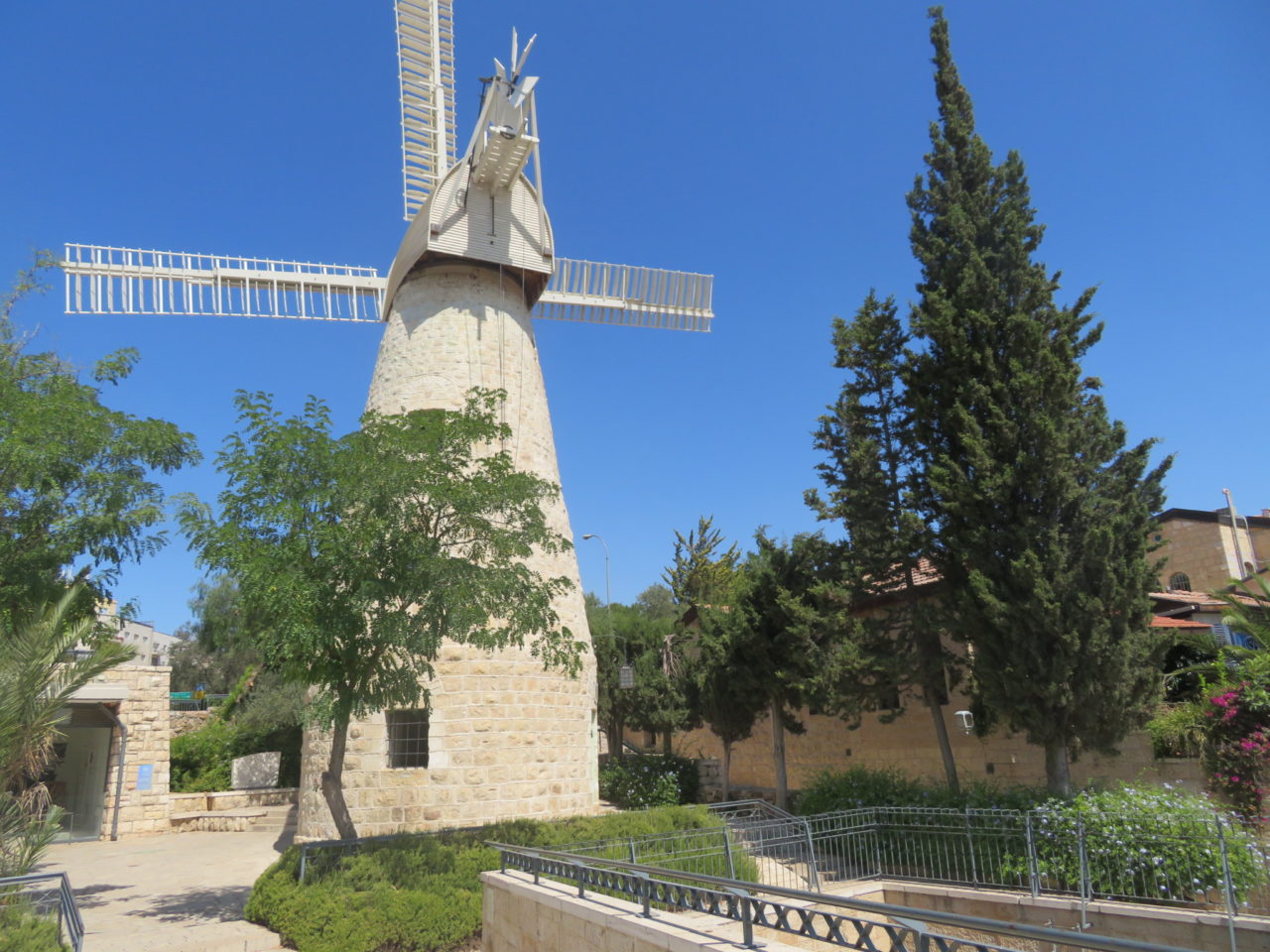
The joys of walking Jerusalem – The windmill in the Yomin Moshe neighborhood
Our walk started with the Yomin Moshe neighborhood, just a few minutes walk south from our hotel, the legendary and historic King David Hotel. The Yomin Moshe area was the first Jewish neighborhood built outside of the city walls to help relieve the overcrowded and unsanitary conditions inside the walls. Now a very upscale neighborhood, Yomin Moshe features a Jerusalem landmark, a windmill, which was built in 1857 to allow poor jewish residents to mill their own flour.
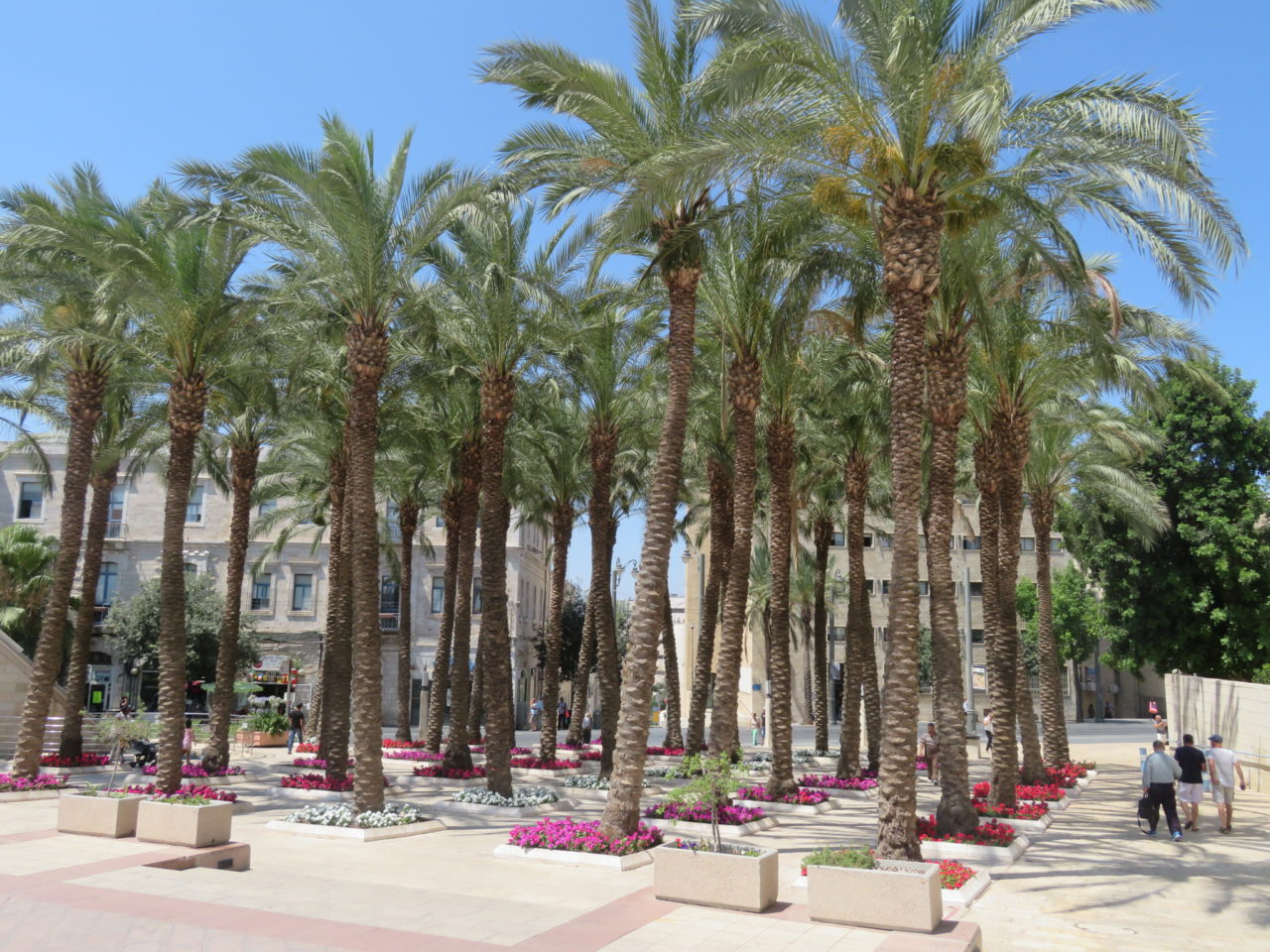
The joys of walking Jerusalem – Safra Square in the Russian Compound neighborhood
We then walked north past the hotel district to Safra Square, which marks the beginning of the area known as the Russian Compound. Situated on a hill right outside the walls of the Old City, the Russian Compound had historically been the choice location for invading armies to gather before attacking Jerusalem, as the Romans did there in 70 BC. Built up in the 1860s to provide facilities to the large number of Russian pilgrims, the Russian Compound (so named because it was once surrounded by a wall) was purchased by Israel in 1960 and now houses the municipal offices of the city of Jerusalem, a number of historical Russian churches and buildings, and what is arguably the most beautiful street outside of the Old City, the Street of the Prophets (Ha Nevi’im).
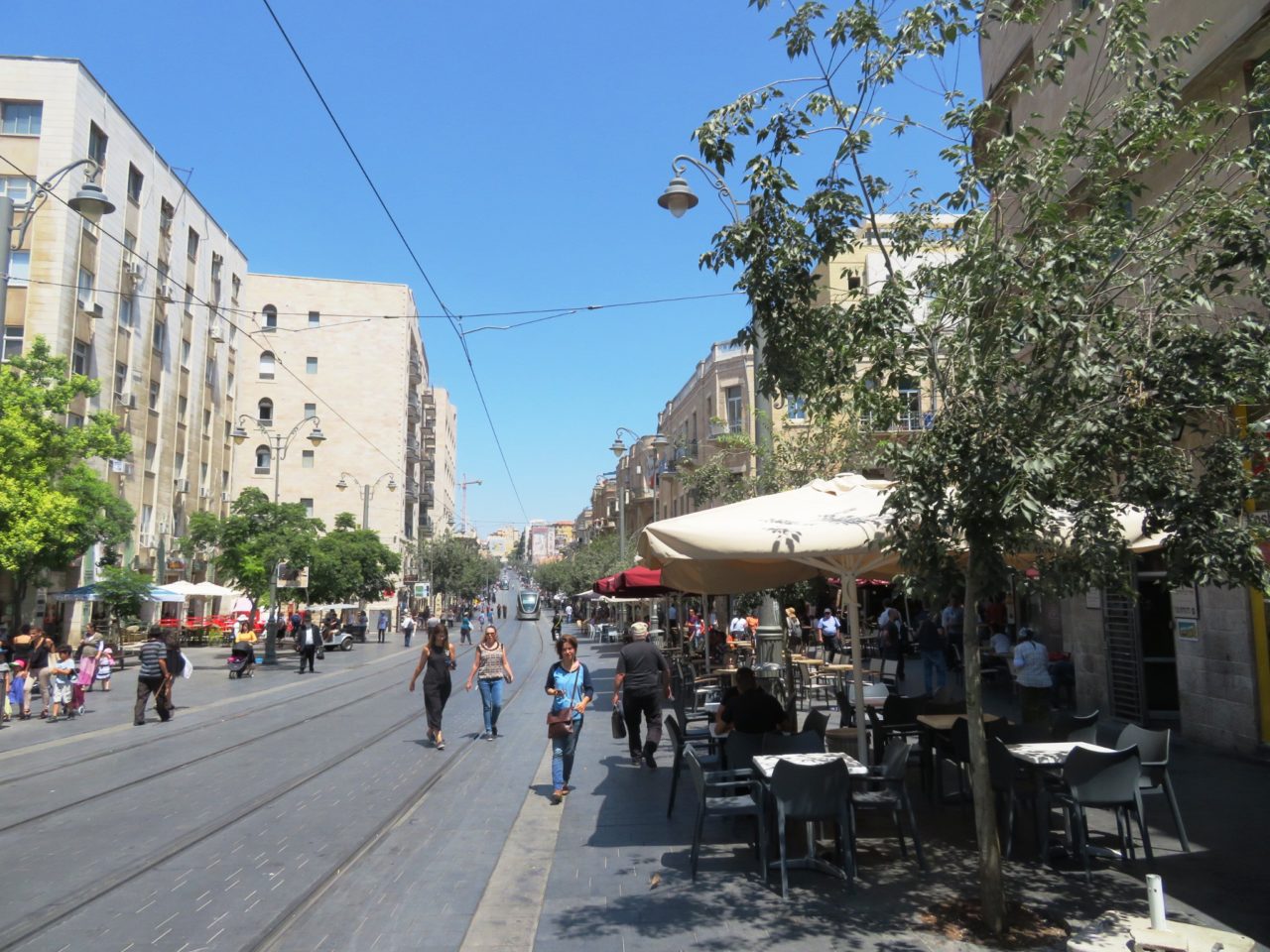
The joys of walking Jerusalem – Jaffa Street in downtown Jerusalem
We had barely started walking up Jaffa Street, which delineates the Russian Compound on its western side (and leads directly to the Mahane Yehuda market), when we realized that Jaffa Street, essentially the main shopping street of the new city and much more a large boulevard than a street, was a pedestrian area, except for the trams, all the way to the main central bus station of Jerusalem. I don’t know of any other large city where the main boulevard is pedestrian!
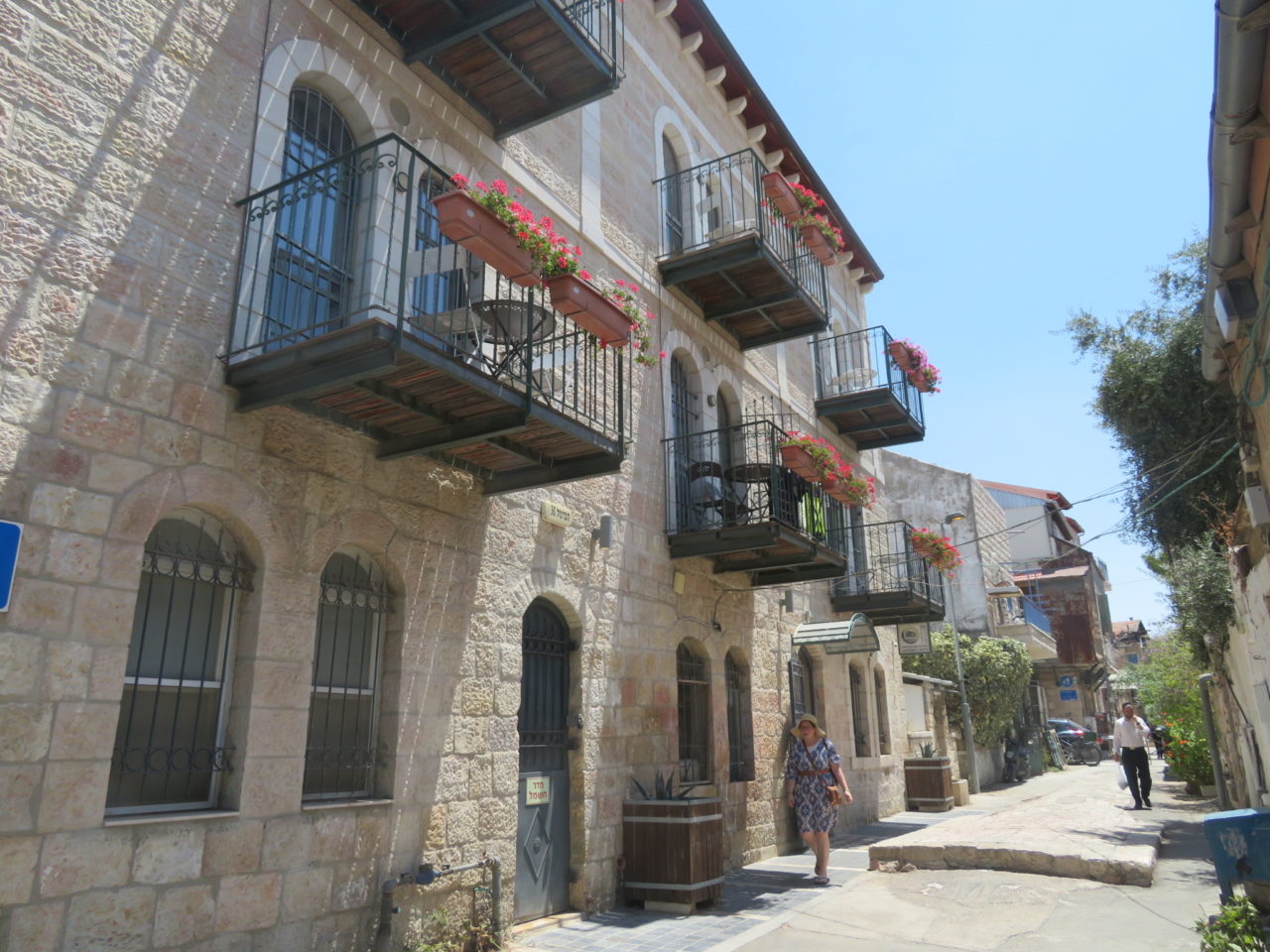
The joys of walking Jerusalem – the Nachlaot neighborhood
We were to uncover many more pedestrian streets and alleys as we explored and walked the adjacent neighborhoods of Mahane Yehuda, Nachlaot and Nahalat Shiva. Each of these neighborhoods has its own unique charm and character.
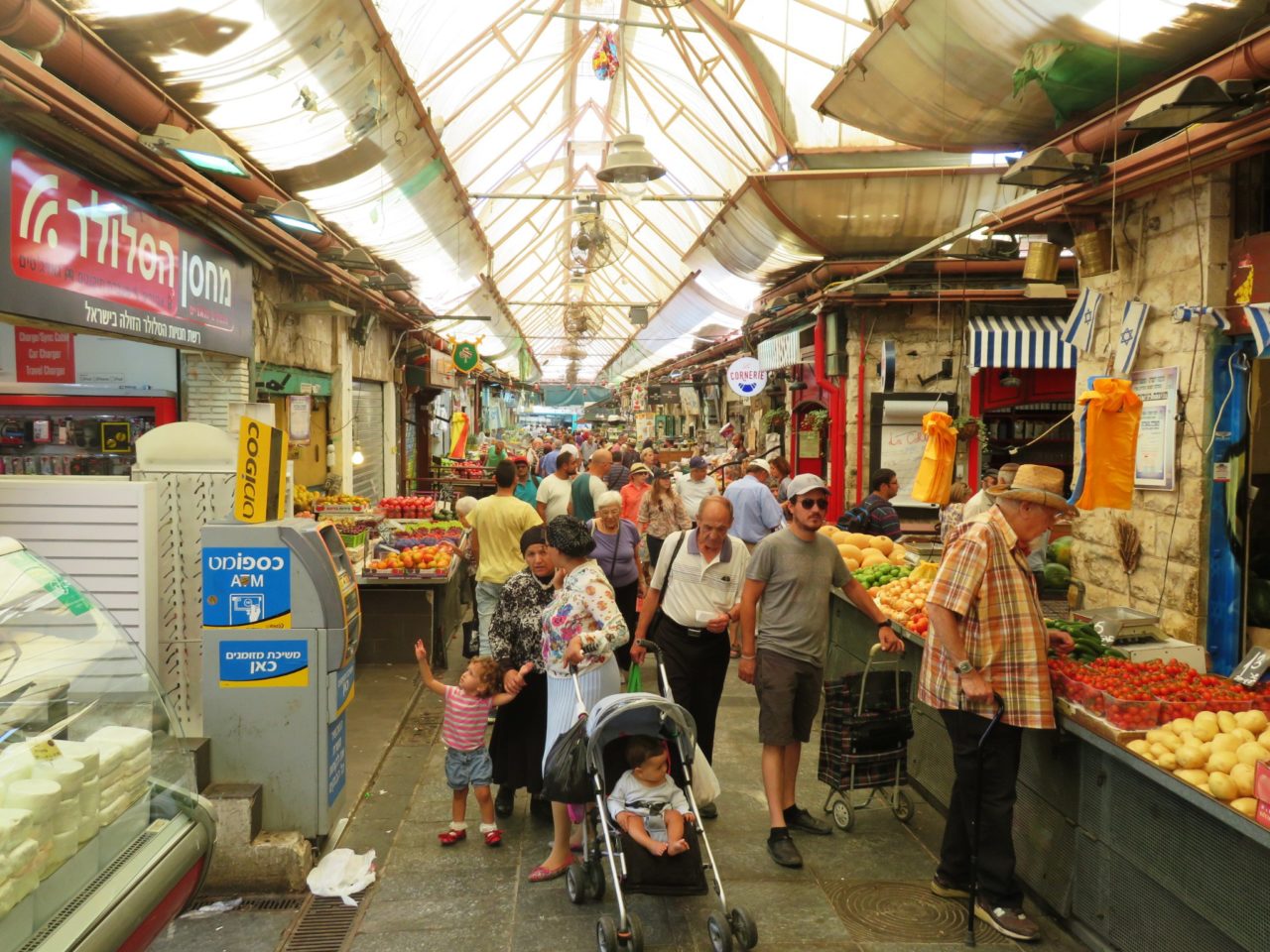
The joys of walking Jerusalem – The Mahane Yehuda market
More importantly, we discovered how livable and charming the center of the city of Jerusalem is. Naturally, we ended up spending some time at the Mahane Yehuda food market and learning more about local specialities such as sesame halva cakes and tahini. We even took the time to sit down for lunch at the best rated restaurant in the Mahane Yehuda market, Manou Bashouk, a lebanese cuisine restaurant.
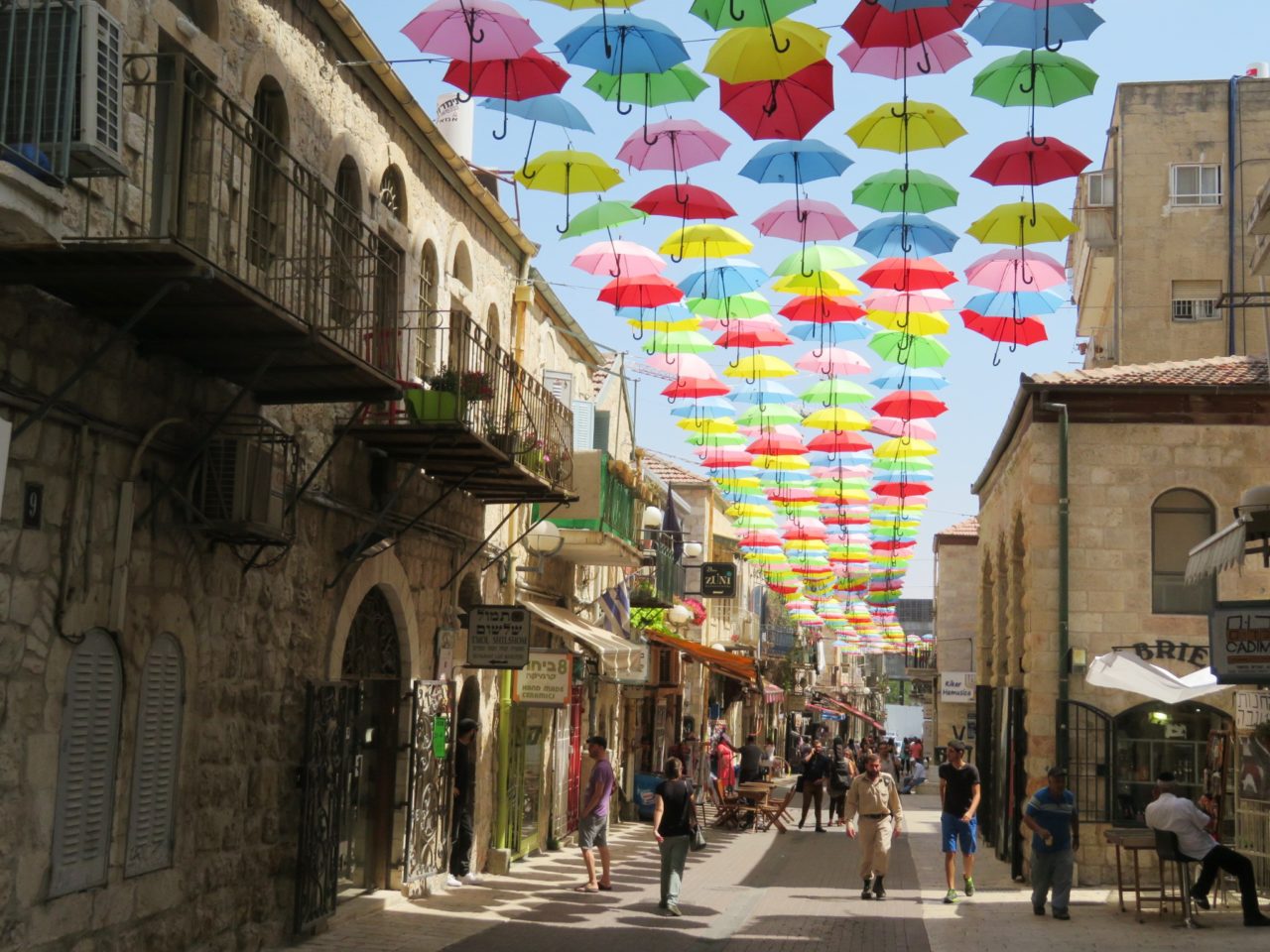
The joys of walking Jerusalem – a street in the Nahalat Shiva neighborhood
But, by and large, we just walked the streets and alleys of the different neighborhoods. Interestingly enough, we felt completely safe and at ease walking around the city, more so that we would have felt in just about any other city, essentially because we know that the Israelis have a long experience with terrorism and they have taken a lot of precautions and measures to protect the civilian population.
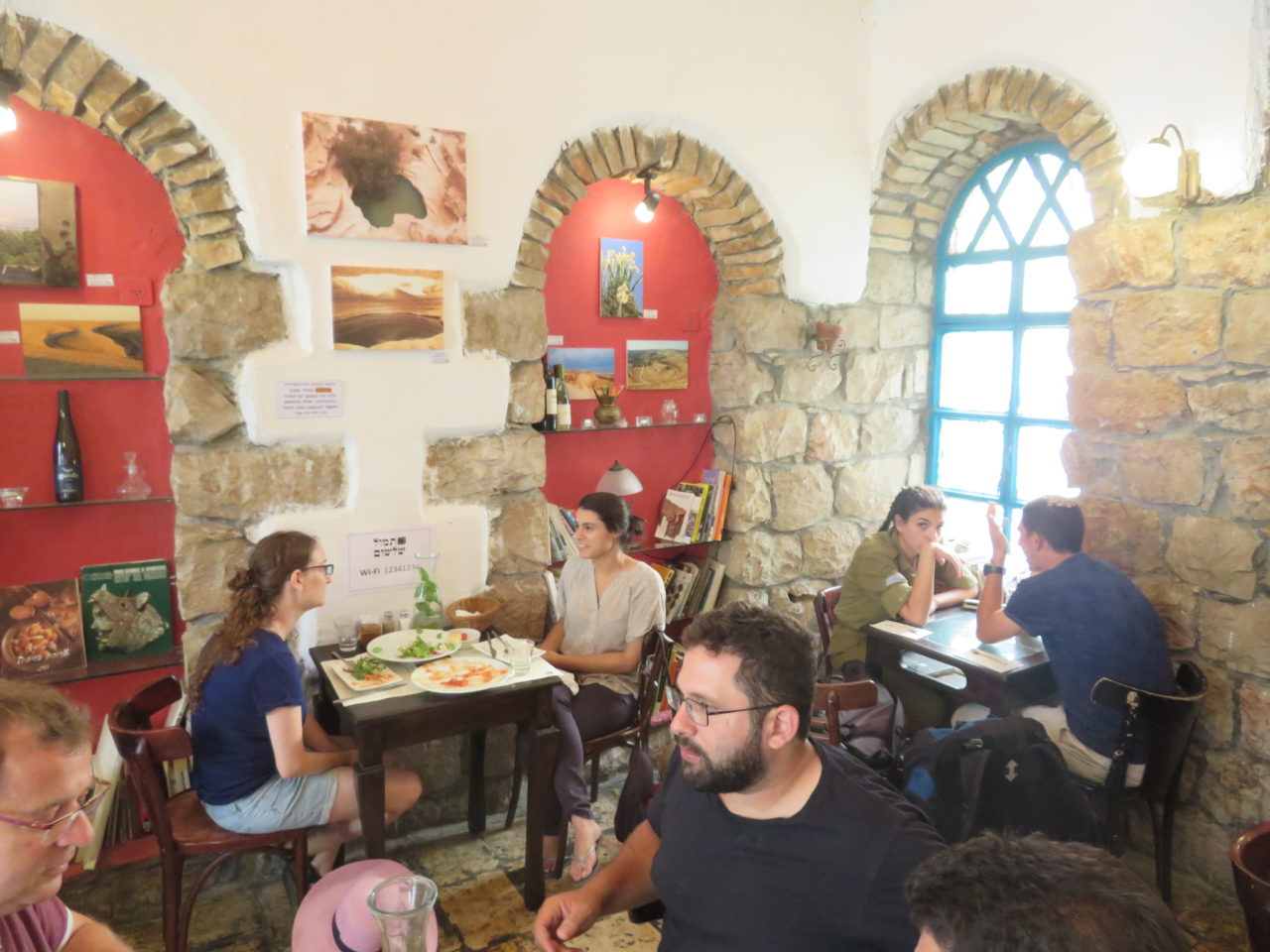
The joys of walking Jerusalem – A corner of the Tmol Shilshom literary cafe and restaurant
We made a lot of discoveries during our day, but two of them were particularly meaningful to me. The first was our visit to another Jerusalem landmark, the Tmol Shilshom literary cafe and restaurant, tucked away in a corner of Nahalat Shiva, and well known to anyone interested or involved in Israeli litterature. We had the pleasure of meeting the owner, David Ehrlich, with whom we discussed all the famous personalities who had visited or adopted his cafe over the years. David also made sure to let us know that Tmol Shilshom’s breakfast (particularly its shakshuka) had been named as one of the ten best breakfasts in the world by travel guide Lonely Planet! I suspect that David had read our blog article, “The Israeli Breakfast – Best in the World“, which had gone viral on the internet the preceding month. On the second floor of a nineteenth century building, and featuring a small courtyard sandwiched between two dining rooms and a narrow balcony overlooking a pedestrian alley of Nahalat Shiva, the setting of the Tmol Shilshom cafe is full of charm and character and I can’t think of a better place to make a stop at for a drink or a meal while walking the streets of downtown Jerusalem. Come to think of it, Tmol Shilshom makes a fantastic choice for a romantic date!
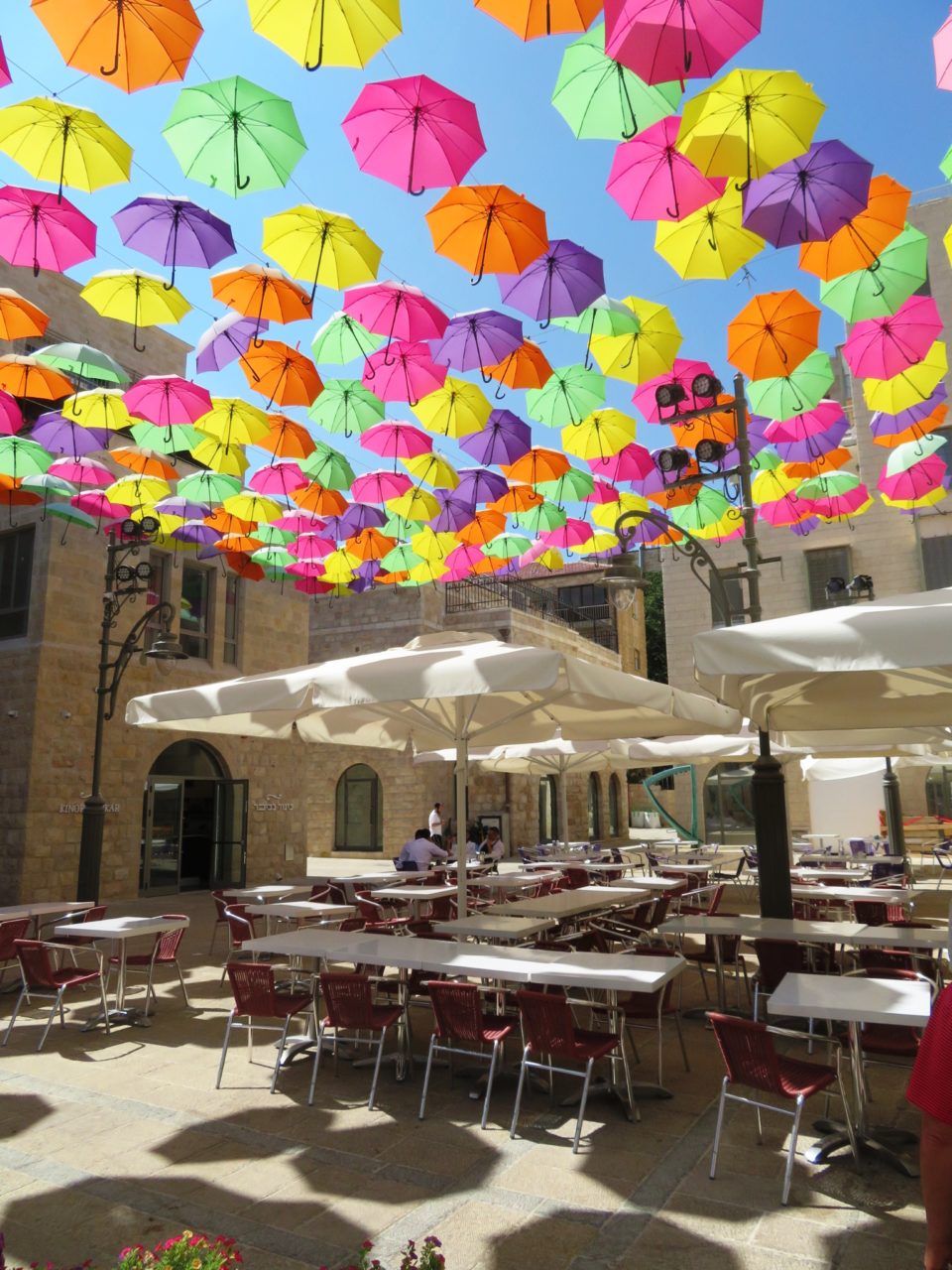
The joys of walking Jerusalem – Music Square (Kikar HaMusica)
The second discovery of note is the Music Square (Kikar HaMusika) in the Nahalat Shiva neighborhood. Host to an eclectic range of live music concerts on a daily basis, the Music Square was founded on the principle of unifying people of all religions thru music. Filled with tables and chairs and surrounded by eateries, the Music Square allows for enjoyable evenings in good company filled with piano, jazz, Israeli music, etc… The Music Square is definitely on our list for our next visit to Jerusalem!
We spent many hours walking the streets of the center of Jerusalem yet we left feeling that we had not seen it all and wanting more. We’ll simply have to return to Jerusalem to discover more of its treasures! Next year in Jerusalem?
Stay tuned to BonVoyageurs.com for our writings about other Countries of the World as we share our joie de vivre from around the world. Luxury escapes, cruises and city breaks to Quebec City, New York, Washington, Buenos Aires. In Europe and the Mediterranean, places like Paris and Nice in France, Florence, Rome, Napoli and the Amalfi Coast in Italy, Tel Aviv in Israel. In Asia, countries like China, India, Nepal and so much more!
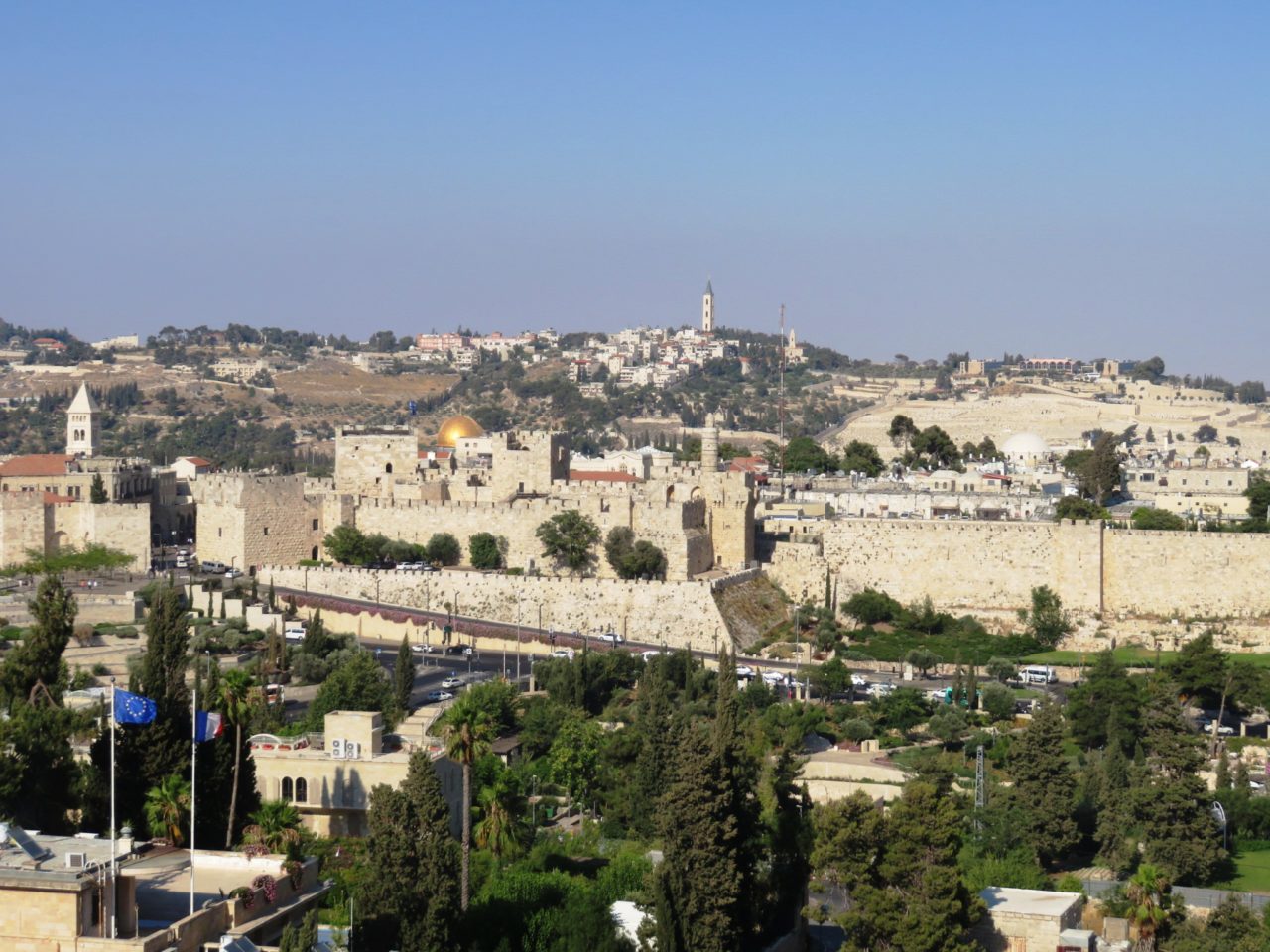
The layers of history are simply amazing in Jerusalem. We have not visited yet but it is certainly near the top of our list.
How interesting (and timely, in view of next year’s TBEX in Jerusalem). I was in the city very many years ago and didn’t venture far from the old town, but it seems that there is a lot to see in the more modern part.
Jerusalem looks like a wonderful walking city. It’s always nice to see think close up and to be able to visit at your own pace!
I thoroughly enjoyed your article. I have been living in Jerusalem for 11 years now and so appreciate your excellent guide to our beautiful city.
Great write up of the city I call home. You hit all the great spots! Oh, and the light rail will take you all the way to Mt Herzl and Yad Vashem…